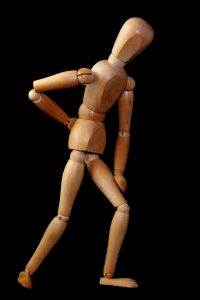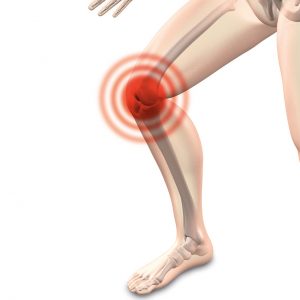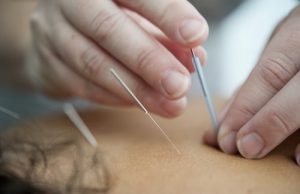Falls prevention programs play an important role in the health of the elderly population. Falls and the complications associated with them are a huge issue. It affects many aspects of society including health care spending and caregiver stress. Furthermore, the resulting injuries and effects from a fall can be very serious, both for the patient and the family involved. At PhysioNow, our Registered Physiotherapists can help protect your loved ones from falls.
Causes of Weakness & Frailty in the Elderly
The reasons for weakness, loss of function/mobility and frailty in the elderly may include:
Genetics
-
- Some physical characteristics or conditions may have a strong genetic component
- For example, osteoarthritis may be influenced by genetics and can significantly affect a person’s ability to be mobile and active
Disease/Conditions
-
- Any disease that affects the strength and/or mobility of a patient will place the individual at risk of falling as the condition progresses
- Examples include Osteoporosis, Parkinson’s Disease, Multiple Sclerosis and Stroke
Injury
-
- Any previous or recent injury may affect an individual’s ability to be safely mobile
- More specifically, this is especially true if the patient did not receive the appropriate treatment for that injury
- Therefore, this may result in lingering physical problems that continue to worsen with time and further ageing
- Examples would include previous falls and fractures
Medications
-
- A lot of seniors are on a variety of medications for different health issues including cardiac medication, blood pressure, cholesterol, diabetes, etc.
- Sometimes certain combinations of medications may produce symptoms like dizziness and confusion that may place the senior at more risk of falling
Inactivity
-
- Some seniors have developed loss of mobility, strength and balance due to a mostly sedentary lifestyle
Dementia
-
- Dementia refers to a group of symptoms related to the decline in memory and other thinking processes
- As dementia progresses, these limitations will affect their ability to take care of themselves
- Patients with dementia may forget to take their medications or may hurt themselves and not remember that they are injured
- These types of changes can lead to an increased risk of falls
Outcomes of Falls
Falls pose a severe threat to the health and well being of this population. Potential injuries with a fall are the most concerning:
- Sprains/Strains
- Fractures
- Hip fractures are the most serious consequence of falling for seniors with osteoporosis
- Patients are at increased risk of early death for many years after a hip fracture
- Joint Dislocations
- Head trauma
- Concussions
- Stress and anxiety related to the fear of falling
What is the best way to address falls in the elderly?
- It is important to try and interrupt the cycle of falls, since each fall leads to more complications.
- Importantly, the best way to do that is to promote exercise and an active lifestyle.
- More specifically, being active allows seniors to regain their confidence and be more mobile, which is the best thing for their health.
- Furthermore, this is especially important as seniors continue to age when joint stiffness, muscle weakness and other age-related changes are more common.
- In contrast, seniors who do not participate in regular exercise place themselves at risk of having a poor quality of life.
- Additionally, physical activity is very important in the management of a lot of the health conditions that affect the elderly population.
- For example, research consistently shows the importance of exercise in the treatment of arthritis, diabetes, fibromyalgia, osteoporosis and neurological conditions like stroke and Parkinson’s Disease to name a few.
- A Registered Physiotherapist is an expert in movement and exercise and is the perfect person to help prevent falls in the elderly.
Benefits of working with a physiotherapist for a falls prevention program
Seeing a Registered Physiotherapist in a community clinic is a great way to work on falls prevention. Alternatively, there are falls prevention programs offered through community centers and hospitals. However, these programs tend to be done in a group setting. In contrast, seeing a registered physiotherapist in a clinic setting would allow for a more one on one experience. This would allow the falls prevention program to be tailored specifically to that person.
- A registered physiotherapist will have the expertise to assess the risk of falling and provide guidance towards exercises and activities that are safe for the senior to do.
- Furthermore, they can assess the range of motion and strength limitations and provide a specific exercise program that targets those specific areas.
- Additionally, the physiotherapist can supervise the exercise program in the clinic, which is a safe and controlled environment.
- The physiotherapist can progress the exercises as the senior shows improvements. This will ensure that the senior is doing what they need to do to build up their endurance and tolerance for activity.
As the senior learns to get more active and mobile, they will reduce their risk of falling. Furthermore, they will also gain confidence in their ability to take care of themselves. Therefore, having improved strength and mobility will allow them to do more with their loved ones and enjoy the later years of their life.
Call PhysioNow today to start your Falls Prevention Programs with a Registered Physiotherapist!

 Physiotherapy for ankle sprains is an important part of recovery. There are many different types of
Physiotherapy for ankle sprains is an important part of recovery. There are many different types of  What causes knee pain?
What causes knee pain?
